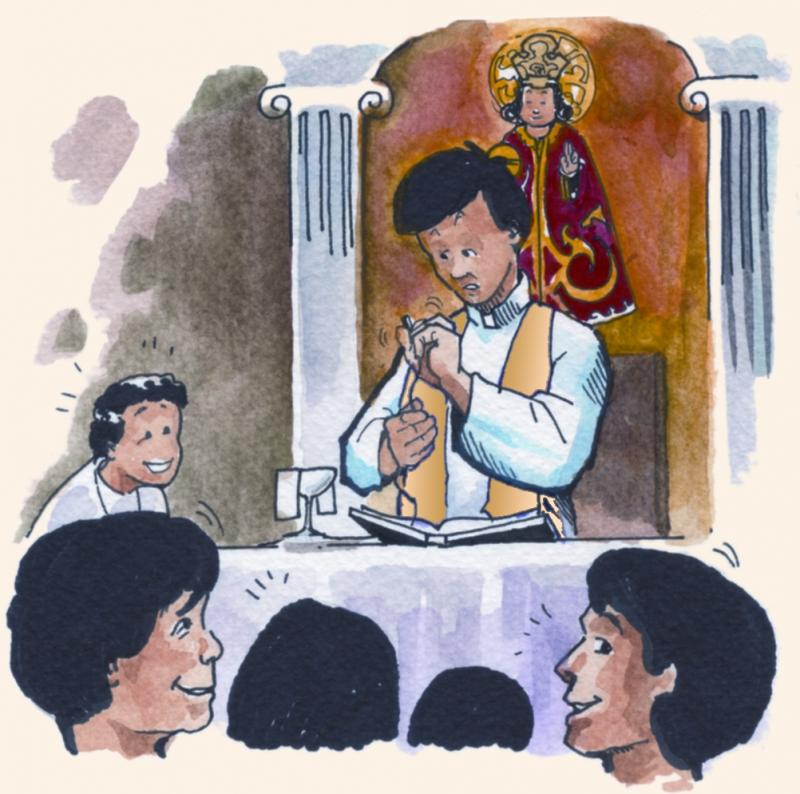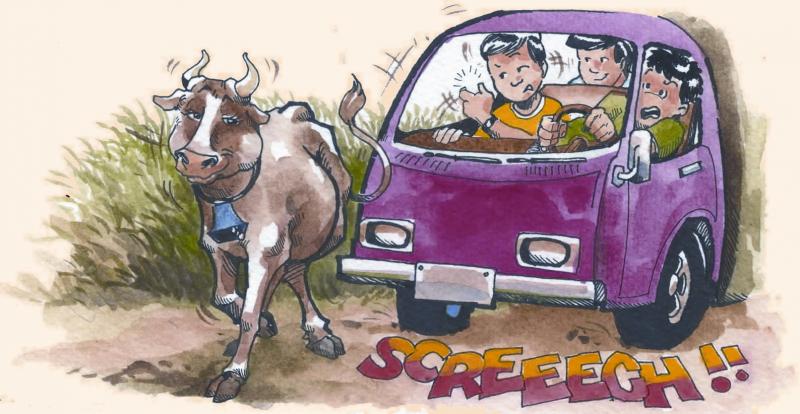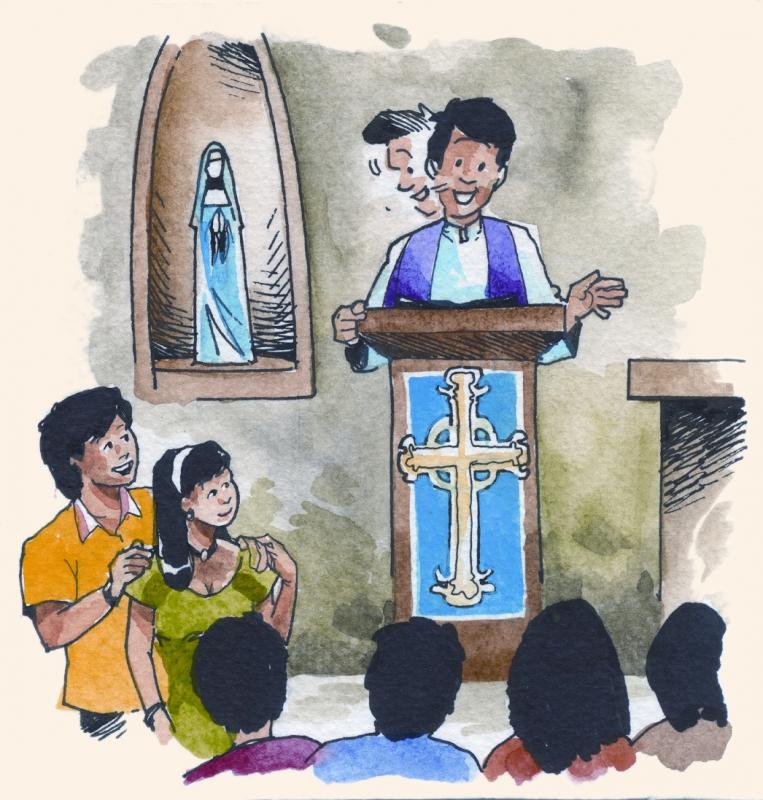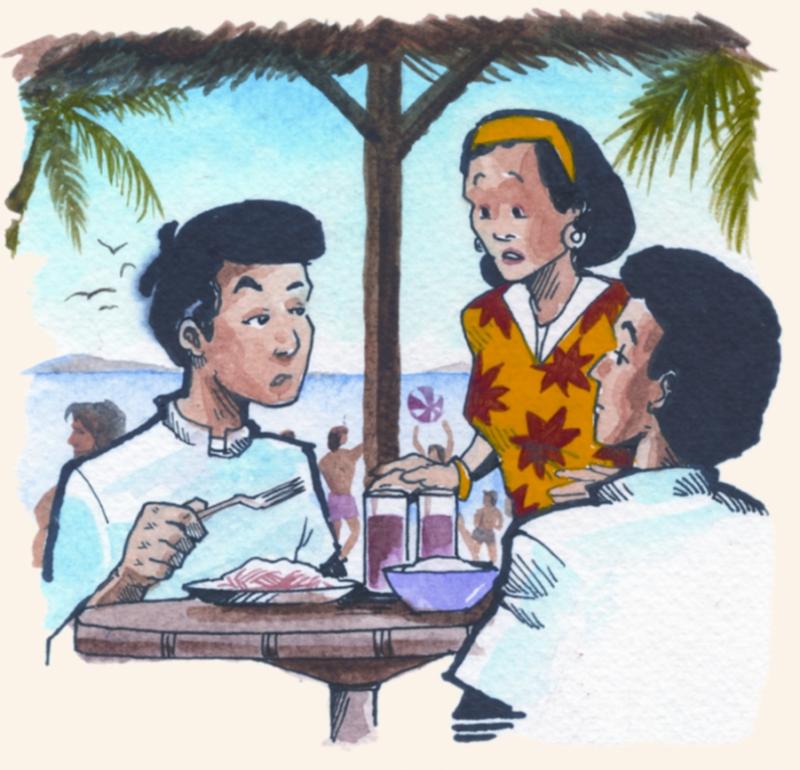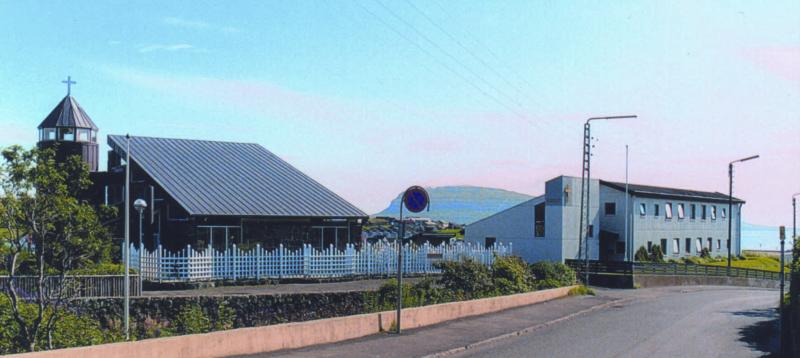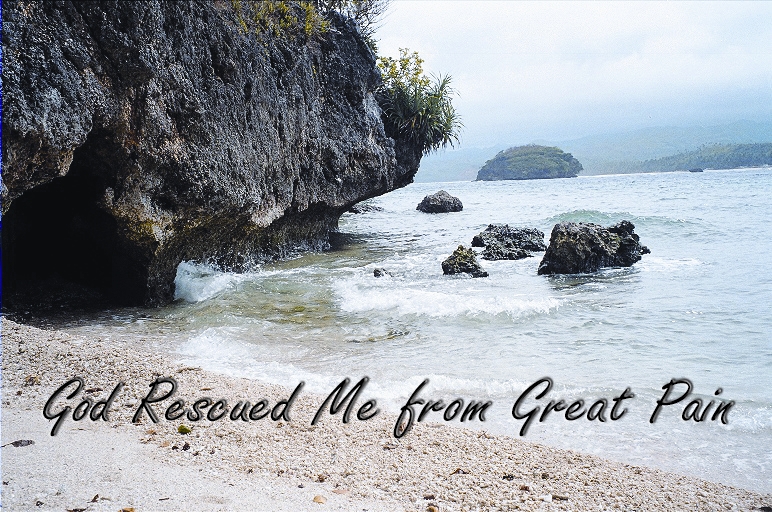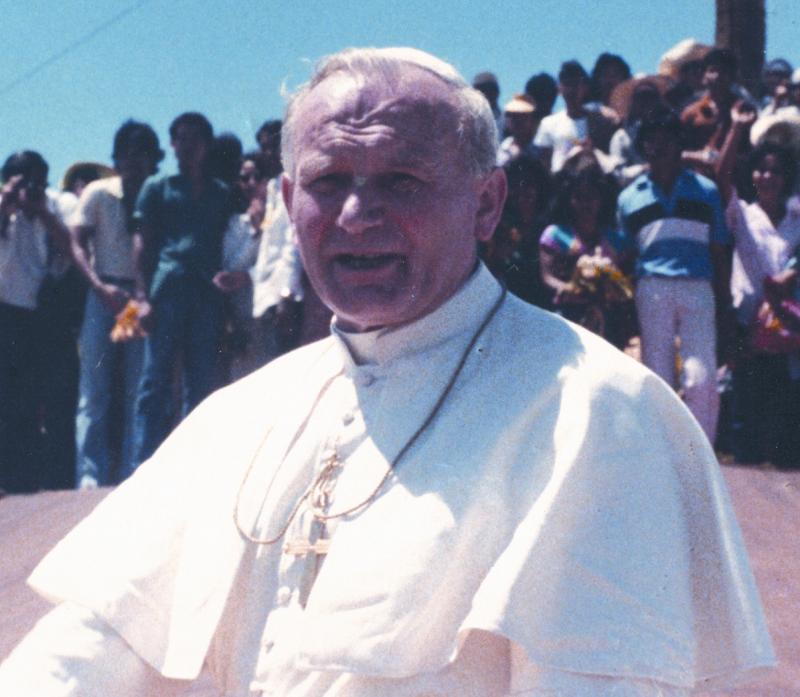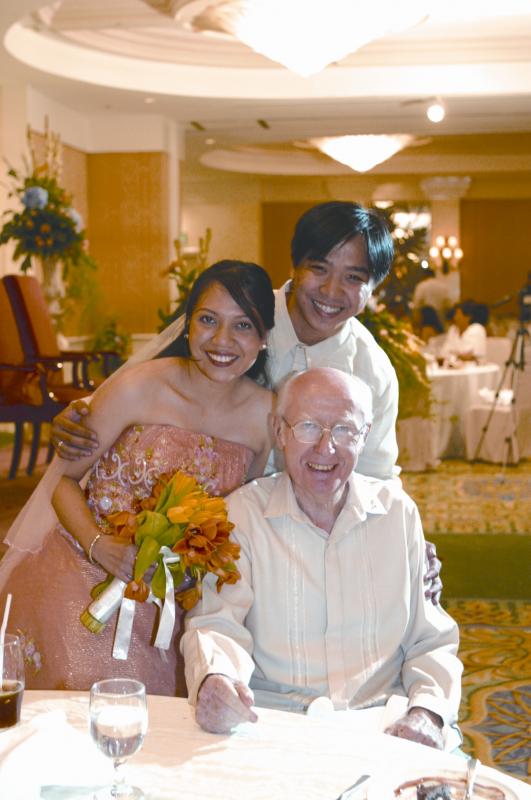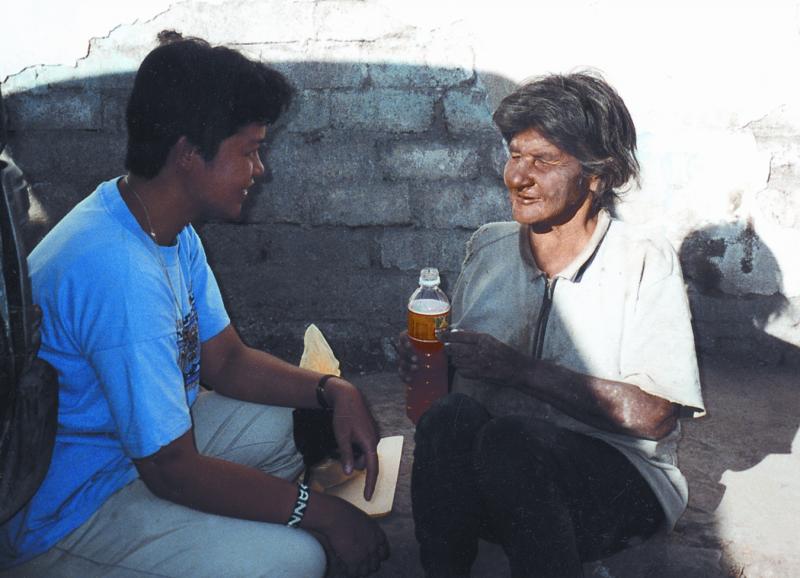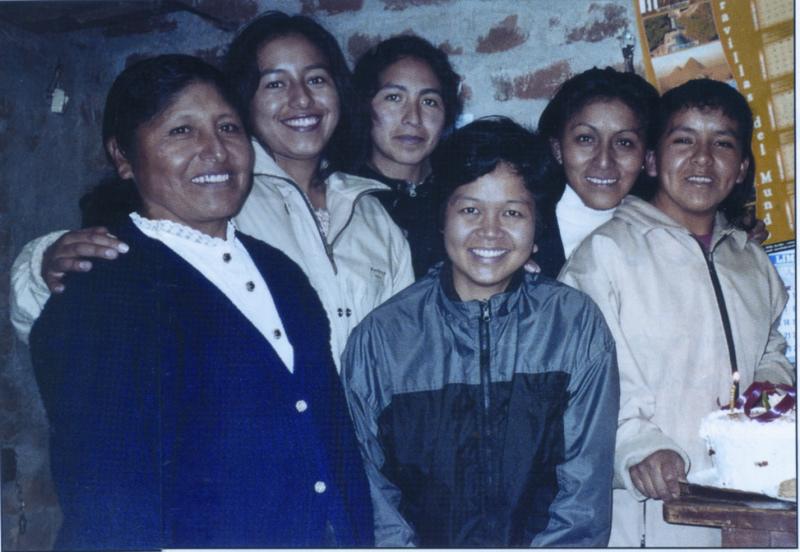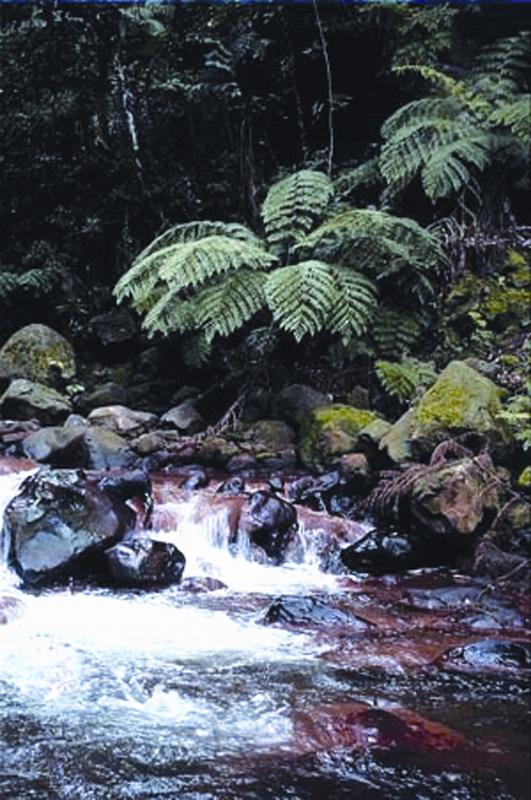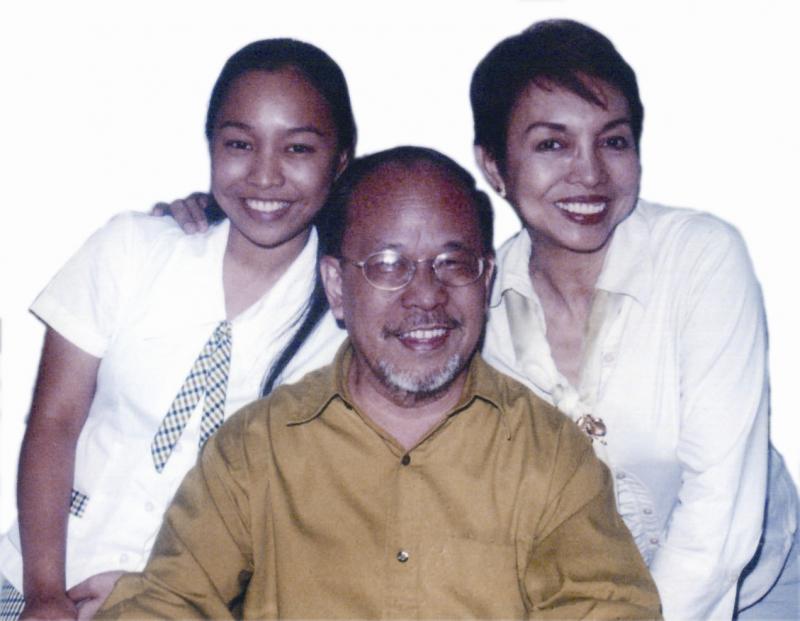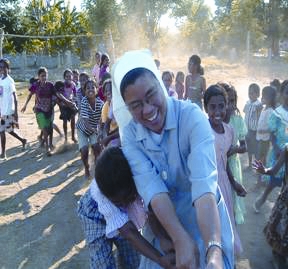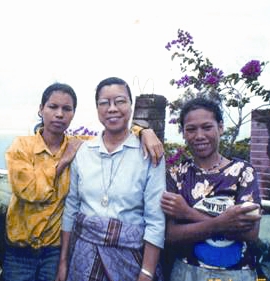July-August 2005
A Student’s Letter To Father Bert
By Cathleen E. Caga-anan

Cathleen ‘Nayie’ Caga-anan, now a 4th year high school student in St Scholastica’s College, Manila, wrote this letter to Father Bert Layson OMI in response to his article Peace Progress in our January-February issue. She has given us permission to reprint it.
Dear Father Layson,
Greetings! I’m Cathleen Caga-anan or Nayie, a 3rd year high school student at St Scholastica’s College, Manila. We are encouraged to read Misyonwhere I read your story, Peace Process.
It revealed to me something that newspapers reporting about the war in Mindanao don’t. I saw the heart of what was really happening there, not just hazy and technical outlines, eg, ‘200 people died, and President GMA…’ I was touched by your story because it unfolded to me the behind-the-scenes happenings in Mindanao.
I admit that I dislike reading about the war in Mindanao. Oftentimes, I finish an article about war with a heavy heart. But with your article, it was different. I knew that in war people die and ties are broken, and that people are also united by it. But I never read an experience that could confirm these thoughts. But your story concretized what I had thought before. Two quotations really made me think long and hard:
‘A priest I know told a Muslim, “When you die I’ll only have 50% feeling for you. But when my parishioner dies, I’ll have 100% feeling for him.”’
‘In Mindanao, when you ask a Muslim boy what he wants to be when he grows up, he tells you, “A rebel to fight the military.” A Christian boy tells you, “A soldier to fight the rebels.”’
Why do people with the obligation to wholly accept those who are ‘different’ antagonize persons who need understanding rather than hatred?
It seems to me that Catholics are under the impression that all Muslims are rebels, therefore evil creatures, while Muslims are under the impression that Catholics are irrepressible tyrants, therefore evil creatures. The government and the Catholic Church even label rebels and terrorists as ‘Muslims,’ which is wrong. The term ‘Muslim’ refers to all who follow Islam. Calling these renegades and reprobates Muslims insults innocent Muslims and propagates hatred among Catholics for Islam, not for the MILF or Abu Sayyaff. The fact that we Catholics link Islam and Muslims to those who cause trouble for our country is insulting. Many forget that Islam is not evil and certainly does not exist to produce terrorists and rebels. Associating Islam with rebels taints Muslims who do not believe the same as these.
Many Muslims despise the troubles caused by the MILF. Many wish only for unity and peace between religions and cultures. Many Muslims want a better future for their children, pretty much like Catholic parents. But are these like-minded Muslims heard? Are they even noticed? Do people even consider Muslims as individuals, not as a group all sharing the same views? The article proved that not all Muslims are like the rebels. In fact, it proved that Muslims feel the same sentiments as Catholics.
As far as I’m concerned, I see that this whole perception is guilty of the fallacy of ‘Hasty Generalization.’ The actions of one group, composed mainly of Muslims, do not mean that the whole lot is a sour bunch. The war in Mindanao should not be defined as a Muslim-Catholic war but as a war against rebels, not Muslims. Many influential people have set a hard line between Islam and Catholicism, a line that does not respect the uniqueness of each of the two religions; this line has become the foundation of close-mindedness and misunderstandings. Islam and Catholicism do not exist to be enemies, but to live harmoniously in one shared world.
I’m sad that there are so many myths and misconceptions on this issue. We should all stand strong to keep our world a safe and livable place, but we can’t do it with hidden hatred. I’m sad that innocent people are harmed. Hundreds of families run away from their homes every day because of the threat of death. Muslims and Catholics alike are in danger. Catholics and Muslims alike are mortal, and some die each passing day. Much worse, these families who have already lost their homes, their loved ones and their dreams, are subjected to prejudice from opposing parties.
Yet it’s comforting that under the haze of war and terror, some Muslims and Catholics are bound together by the same goal: to live. In evacuation centers Muslims and Catholics share the same meals, pray together and talk without caring that the other is not of the same religion. When you wrote about Muslims offering gifts for the Mass, it warmed my heart to see people of different religions helping and comforting each other. It gave me hope that not all are blinded with misconceptions. I realized that Muslims and Catholics are not so different. We share the same sorrows and joys, we repay kindness with kindness, and we know that there is one Omnipotent Being watching over us. There is a silver lining in every dark cloud - someone said - and this was the silver lining. Because of the violence around us, we are bound to work together and work to achieve the peace we all want.
But this leaves me with one question. Do we have to be in the face of death to unite? Are the deaths of thousands of people the only thing to wake us up from a disunited nightmare? But, as you said, that is probably the nature of war.
I’ve known many people prejudiced against Muslims, and hearing them talk just makes me argue against them. It’s ridiculous to think that all Muslims are alike and rebels like those in the MILF. I personally know that this is not true. Why? Because I have Muslim relatives, and am proud of them. They are one of the proofs that not all Muslims grow up to fight Catholics. They do not like the war, and never dreamt of supporting it. They are not prejudiced against us. We’ve never received a text message from them saying that they disown us because we are Catholics. Nor did we ever send them such a text. To us, it’s not a Muslim-Catholic war, but a MILF-Philippine Government war.
Once I heard a person say that a Muslim woman in her office was rejoicing that Osama Bin Laden had bombed the Twin Towers. She told the Muslim that it was wrong to rejoice because people died. This I have no objection to because there really is no point in rejoicing over a thousand deaths. But she made the mistake of saying to me, and I quote from my very nebulous memory, ‘All Muslims just don’t know what to do. Why do they have to rejoice at the deaths of thousand persons?’ I had to argue with her. Not all Muslims rejoice at a thousand new graves in the cemetery! She could have said plainly and simply, ‘No one should rejoice at the death of thousands.’ But no. She had to accuse all Muslims of sadism because of the twisted philosophy of one person. It’s not right. It’s a fallacy. It’s Hasty Generalization. (Just can’t seem to erase our lessons in Speech class!)
Through your story, my beliefs have been even more concretized. What you wrote really happened! I thought, ‘I’m not just imagining things!’ We should do away with labels. Not only do they categorize individuals, but close minds. We are all in a haze of confusion. We don’t know who’s who any more. Muslim, Catholic, or groundhog, we should all try to accept our differences. We should all try to forget that the MILF and the Abu Sayyaff are composed mainly of Muslims. We should all believe that religion does not dictate the thoughts of the person - especially when it comes to war. From what I’ve gathered from the article, I realized that all of us - Muslim or Catholic - don’t really know what’s happening. We think that Muslims band together to fight Catholics, but we’re wrong. This war in Mindanao is not a religious war, and believing wholeheartedly in this is one step to recognizing the unity that should be born of this moment of crisis. If we just take one moment to realize that not all think alike, we would be solving a problem that’s been destroying civilizations and empires: division.
Thank your very much for your story that moved me so much. Yes, I now also believe that goodness will blossom from goodness. And the first good thing I will probably do is to not call the rebels Muslims. Maybe then they won’t see me as another prejudiced person.
The way you handled the situation in Mindanao is admirable and I wish I could do the same. Help was still offered to people of a different religion. And it was returned. The war in Mindanao might not end today, but you surely proved to me that hope exists.
I learned a valuable lesson from reading your article, that even though there’s war, good will always come out of it, if you make the first move. Like factories. We have to process the peace first, before we get the product that will benefit us all.
Thank you once again for your wonderful experience! My prayers are with you for all you are doing and will be doing. Even though I cannot be in Mindanao working for justice, I will still offer my prayers, something that will not go away easily.
God bless!
Nayie
Father Joeker

By Fr Joseph Panabang SVD
THE TINY MICROPHONE
I said Mass at Good Shepherd Convent in Baguio. It happened to be the Feast of Sto Niño. When Mass was about to begin, I had a little problem with the tiny microphone on my vestments. While struggling to put it on, I mindlessly said to myself, ‘Even their microphone is so small, like a Sto Niño …’ – unaware that the mike was on. I was so embarrassed when I saw the people smiling. Obviously they heard what I said. Me and my big mouth!
BLOW YOUR HORN
We were on our way to Kalibo, capital of Aklan. Mr Louis, one of the benefactors of the Pink Sisters, was seated next to the driver. All of a sudden a cow crossed the road. Luckily, the driver was able to step on the brake right away. I was amused when I heard Mr Louis say, ‘That cow doesn’t know how to blow her horns.’
ON MY OWN
The Bukas Loob sa Diyos Charismatic Community invited me to say Mass at Home Sweet Home inBaguio. The first reading was done by a couple, the husband reading the first part, the wife the second. The responsorial psalm and second reading were read in the same way by two other couples. Then came the Gospel. Before reading it, I said, ‘Since I have no wife, with your permission, let me read the whole Gospel…’ to the laughter of the group.
WHO’S THE COOK?
We ordered pancit canton in one of the restaurants in Boracay. While eating it I asked the waitress in a serious tone, ‘Who cooked this?’ She nervously replied, ‘Why?’ ‘It’s so delicious. I liked it very much!’ I said. The waitress was so relieved! She must have really thought something was wrong with the pancit.
Fiesta In The Faroes
by Father Seán Coyle
At 1am on Sunday, 30 July 2000, I was dancing with thousands of others in the streets of Tórshavn, the capital of the Faroe Islands. It was the culmination of the National Day, the feast of St Olav. We were doing the Faroese Circle Dance. This began with a singer leading a song that recounted the history of the people and seemed to have about 100 verses. Most knew the words. The circles of dancers formed all over the place until everyone was involved. It was quite impossible not to join in. The steps are very simple, two double steps left and one right. The dance to that first song lasted probably twenty minutes and was followed by another. No instruments are ever used.
‘Sheep Islands’
The Faroes consists of 18 islands, 16 of them inhabited, in the north Atlantic, between Iceland andNorway. The 45,000 people here, most of them members of the Lutheran State Church, enjoy some independence from Denmark since 1948. They have their own language and flag. Although Denmarkis a member of the European Union, the Faroes is not.
The name of the country, Føroyar in the Faroese language, means ‘sheep islands.’ Many families still come together late in the year when they slaughter a sheep to provide them with meat for the winter. They feast on what cannot be preserved.
Like a Philippine fiesta
One of the most striking things about the Faroes is the strong sense of community. This was very evident during the St Olav celebrations which began the afternoon before, just as Philippine fiestas do. There was a short parade in Tórshavn, where all the celebrations take place, ending at the parliament building, a traditional Faroese one with a grass roof. There was a brief speech or two and then all sang the National Anthem.
People then went down to the harbor to see the boat-races. There were races for men and for women, for crews of six, eight and ten. The teams came from different towns and villages. There was a fog over the harbor, something very common here, so you couldn’t see too clearly where the races began across the bay. But once the boats entered the harbor you got a good view. Many were listening to the commentary on the radio but didn’t seem to get too excited although they were clearly enjoying themselves. Many, young and old, were wearing traditional Faroese dress.
Faithful from all over
On the morning of the 29th at 11 the Lutheran bishop led a procession of the clergy and members of parliament to a nearby church for a service. In 2000, the millenium of Christianity in the country, clergy of other churches were invited for the first time. A married deacon represented the Catholic Church which has only about 80 members in the country, including about ten or twelve Filipinos. After the service the procession came back to the parliament building and there was a short choral concert that featured the premiere of a work by two young Faroese. This had won a competition for the Christian millenium.
Time to be merry
The town center was thronged most of the time and people bought food or entered contests at the many booths set up for the occasion, just as in the Philippines. I met one Filipina who had won a teddy bear. Many were walking around drinking alcohol. Alcoholism is a problem in the Faroes, as it is in all Nordic countries, but during the fiesta it doesn’t cause any real problems. I saw no rowdy behavior, though I heard that the police had locked up a few on the night of the vesperas to let them sober up. And I heard that they were called to one or two homes to deal with domestic disputes. But the fiesta ambience is one in which people can drink safely, even if many do so to excess.
Back (2nd, 3rd, 4th from left): Fr Quang (Vietnam), Sr Marisa FMM (Malta), Sr Florence FMM (Korea); front right: Deacon Christian Gabrielsen (Denmark) and Filipino parishioners in Klaksvik
Asian presence
As in the Philippines, many come home from overseas for the fiesta, Olavsvøka in Faroese. I met one woman home from Denmark with her adopted daughter, a Korean. There are quite a few here now in the Faroes who have been adopted from countries such as Korea and Colombia. What is very nice to see is someone in Faroese traditional dress and speaking Faroese who is clearly Asian by origin. One Catholic Faroese-Indian couple, Johann and Sharon, adopted a little Indian boy, Peter, in 1999. He was very proud to come to Mass in his Faroese costume.
Friends meet who haven’t met since the previous year and people in Tórshavn have plenty of food for visitors. The only Filipino family in the town had invited all the Filipinos in the islands and myself to drop by in the evening.
Language revival
Traditional songs, particularly those sung during the Circle Dance, saved the Faroese language. Some of them are very long and go back to the days of the original Viking settlers more than 1,000 years ago. It was only in 1938 that the Faroese language was given legal recognition by Denmark. Before that children were not allowed to speak it in school and Lutheran pastors were not allowed to preach in the language. Now it is used at every level and for every activity. Everyone learns Danish at school but you rarely hear it spoken. Most younger people can speak English quite well but never use it to impress anyone. Foreign TV programs on the local station, which broadcasts only in the evening, have Faroese subtitles. The country’s newspapers are in Faroese as are all the radio programs.
There was plenty of singing on the night of the fiesta. At 11 the Salvation Army led a service near the parliamentary building in which many joined in the hymns. This was in one sense a warm-up for the traditional community singing at midnight for which the town center was thronged with people of all ages. Some of the songs were old, some new, some serious, some humorous. At least two had imported melodies -- one used the tune of ‘When It’s Springtime in the Rockies.’ All were in Faroese and there were no soloists. This was a traditional community affair.
As one people
I found something very deep in all of this, beneath all the good humor. The Faroese people were celebrating themselves, their history, their ancestors, their language, their culture and, at least to some degree, their Christian faith. They had to struggle in the past to retain their language and culture. They have managed to strengthen their identity in a world that is in some ways becoming more and more culturally the same. The Faroes may be the only Western country without the McDonalds arch.
The at-homeness with themselves of the Faroese people is as refreshing as the extraordinarily pure air in these beautiful islands.
Fifth National Youth Day 2004
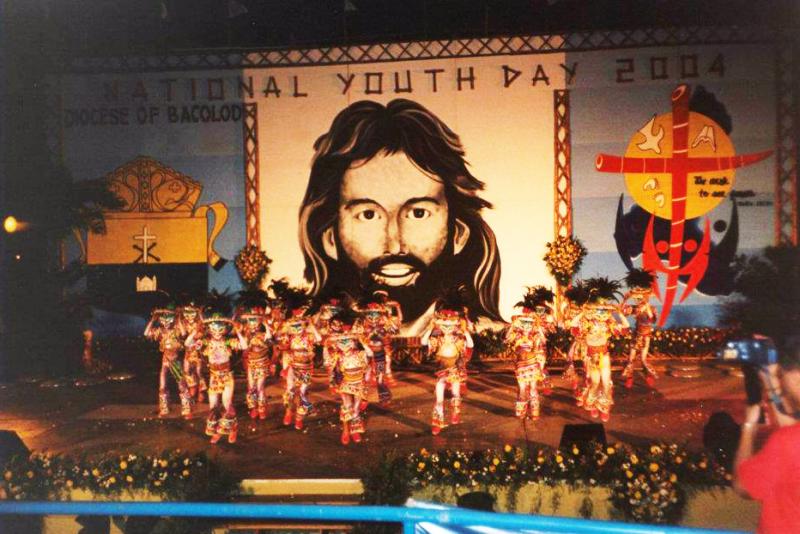
by Marjorie Militar
Marjorie is a third-level student at the University of St La Salle, Bacolod City.
Serving as a lector at St John the Baptist Parish, Bago City, it never crossed my mind that I’d be part of a great event that I’ll cherish for the rest of my life. In December 2003, our parochial vicar, Father Jonas Sumagaysay, told us about an event to be hosted by the Diocese of Bacolod the following November. Soon, we found ourselves busily preparing to welcome the Pilgrim Cross. It went from parish to parish, staying in each for two to three days, from Hinigaran in the south of the diocese, toSilay City in the north, visiting schools along the way, before returning to San Sebastian Cathedral for the start of …NATIONAL YOUTH DAY 2004.
Being the host diocese we had much preparation to do. The parish sent me and my co-lectors, along with members of the Legion of Mary and of the charismatic prayer group, to Sacred Heart Seminary for the diocesan facilitators’ training. Auditions and training for animators and those involved in cultural presentations followed.
On 24 November delegates arrived from all over the Philippines. Next day our anxiety and nervousness only grew stronger as we found ourselves gathering in front of the Cathedral for the start of the four-hour Pilgrim Walk to Panaad, the official NYD site.
We didn’t show our tiredness as we participated in the opening Mass with Bishop Vicente M. Navarra of Bacolod as main celebrant. After dinner, we watched the cultural presentation and even stayed longer, not because it rained but because we were having so much fun. Later we went home to our foster-families, our group staying with parishioners of Our Lady of Lourdes Parish, Bata.
Next day, we assembled again at Panaad and danced as the animators set the mood. We searched for our groups based on the color on the back of our NYD IDs. After fellowship, we ate lunch with our ‘Christian Faith Circle’ as we had catechesis on the themes, ‘Jesus is the Truth, Do You Believe?’ and ‘Jesus is Life, Will You Receive Him?’ In the evening there was an integrated penitential rite with the Way of the Cross and the Sacrament of Reconciliation. It was near midnight before we finally went back to our ‘homes.’
The third day was another exciting experience. We gathered at our assigned catechetical sites. My group was in Colegio de San Agustin (red), but I was also an animator at the University of St La Salle(green) and so had to venture back and forth. Fortunately, the schools are near each other. Later, all headed back to Panaad for the YOUTH JAM! Wow! I’ve never had such wonderful time in my life. It was raining but there was NO STOPPING us YOUTH as almost everybody went close to the stage and we danced and sang at the top of our lungs and shouted and clapped the NYD slogan, ‘N-Y-D, N-Y-D BACOLOD! N-Y-D, N-Y-D BACOLOD! N-Y-D SABAY SIGAW!’ The emcees had a hard time trying to end the JOYFUL commotion because every time they tried, we just replied ‘WE WANT MORE!’
We finally settled down for the cultural presentation, a showcase of talents from every region. It was fantastic! The priests danced and serenaded us with their matching music video! How cool! I witnessed nuns DANCING! Amazing! With heavy feet we finally went back very late to our foster homes and tried to sleep, with the idea bugging us that the next day would be the last.
With sad, yet not so sad faces, we faced the fourth day, 28 November, as we gathered once more. Now with our original group again we bade farewell to our foster-parents and family, in our fellowship party. I was very happy to have met Let-let, my NYD sister from Dumaguete, when we both stayed with the Ausan family.
After the final Mass at Panaad, Congressman Monico Pontebella encouraged us to sing ‘If We Hold On Together,’ which led to many tears. I didn’t cry, maybe because I was so overwhelmed and felt very fulfilled. But now I could say with my exhausted companions, in whose eyes I could see a glow, for now each of us could say, ‘Yes, I’ve seen Jesus!’
From Mahayag And Marawi To Toronto
By Adelaida A. Cantona
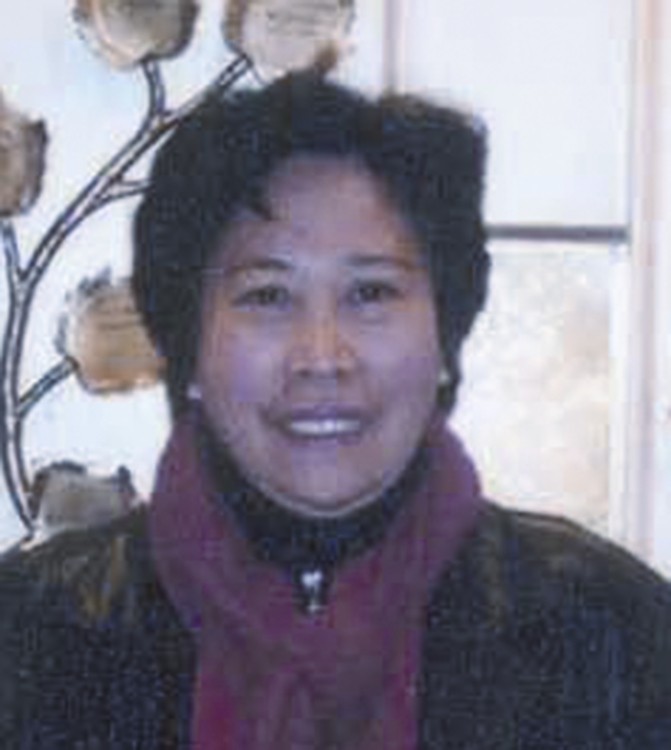
I grew up in St Michael Parish, Mahayag, Zamboanga del Sur, run by Columban priests for many years. In fact, my early image of God was strongly associated with Columbans in white sotanas, talking to us kids who loved to play in the church playground.
I was molded as a teacher by the Columban Sisters in Immaculate Conception College, now ICC-La Salle, Ozamiz City. My strict professional training as a teacher made it difficult for me to adjust to Muslim students, not used to strict discipline, in my first job in Marawi City.
What I really loved to do
The first Columban I met there was the parish priest, the late Father Eamon Fleming. I was happily involved in parish activities during weekends, while I found teaching tiring due to disciplinary problems with my students. Besides, I viewed it then simply as a way to earn money. Father Fleming became instrumental in shifting my orientation from academic to pastoral. I finished catechetics at Mother of Life Center, Novaliches, through his initiative.
In 1976 Marawi became a prelature with an exceptional first bishop, Monsignor Bienvenido S. Tudtud, from Cebu City, a real father to all of us and whom we called ‘Tatay Benny.’ He died in a plane crash in 1987. Columban Father Michael Diamond, first chancellor of the prelature, invited me to work there as a catechist. I was so happy being back again with the ‘Columban Family,’ working with the late Father Desmond Hartford, Fr Terence Twohig, occasionally with Fr Sean McDonagh, and with Sisters and lay persons.
What nourished me
My catechetical work was in the midst of conflict between Muslims and Christians, but being with the Columbans and ‘Tatay Benny,’ it seemed like a foretaste of heaven. The joy of being with them stands out in my memory. The very deep prayer-life of these men became my inspiration. There were no dull moments with them. They were all very human, yet deeply spiritual. Their laughter and humanness helped to keep me going. I experienced from them the incarnated love of Jesus in a very human way. I noticed little dichotomy between what they preached and how they lived. My personal experience of the love of God was continuously nourished by prayer, the Eucharist, the witness of the bishop, the Columbans and the Sisters, as well as by friendships with both Muslims and Christians in the area. All these became integral factors in my work as a catechist.
Bishop Tudtud and the Columbans initiated an ongoing formation program, a week every year that was a combined seminar, retreat and workshop, on ‘the call to dialogue’ as the thrust of the Church in Marawi. They also launched special academic studies on Islam and Muslim culture in the Philippines.
The advocate of peace
These activities had a profoundly formative effect on me and brought me to a deeper sense of mission, to help bring understanding and reconciliation between Muslims and Christians. Their prejudice against each other is due to complex factors, among them historical conditioning, an unawareness of similarities in the teachings of Islam and Christianity and of the need to respect the differences between them. I remember that the favorite saint of the bishop and priests was St Francis of Assisi, the advocate of peace, love and reconciliation, the very essence of the Gospel.
I also felt that God had been working through my own limitations. To own and acknowledge them made it easier for me to understand the limitations of others, to listen to the prejudices of those around me, friends and strangers. I considered them all as my brothers and sisters.
As I participated in the ministry of witnessing in my own little way, I noticed that I became very vulnerable too as I lived in the community. But, the loving support of persons like Sr Constance Gomez FMM, Sr Cezaria Alia LGC, my partners in catechetics, and most especially of Fr Michael Diamond, who knew me through and through, brought so much healing into my life.
Ministry of presence
I discovered that God's loving and abiding presence didn’t stop in Marawi or the Philippines. He has been accompanying me even in the far distant land of Canada. I arrived in Toronto in 2002, through arranged sponsorship. I didn't have much information about my employer, except that she had had a heart bypass. I was amazed to discover that she was a Muslim. Here again I had to practice the ministry of presence, against odds. But my experience in Muslim-Christian Dialogue had, to some degree, become part of me. What a grace!
Bringing the Gospel of love to those around me in this new country is not easy. Life's journey here is very tough. I experienced struggle both internally and externally, but with God's help, and with the formation and experience I had in the Philippines, I’ve survived. My volunteer work in a nursing home is another opportunity to share the Gospel message in my own little way. I have shown to the fragile elderly the love of God in my heart, through talking to them, holding their hands, even if they cannot remember me because of Alzheimer’s and other forms of dementia. What matters is that I bring them a little joy. The present moment is what matters to me and to them.
All of this has made me forget my loneliness being away from home and long-time friends, as has involvement in the church of the Franciscans. I feel that I have an adoptive family, the Church.
Today, I look back with deep gratitude to the Columbans, from whom I experienced the unconditional love of God, so much goodness and generosity. What I gained from them has become a part of my life. They were not only my employers but were like real fathers, brothers and friends. I thank God very deeply that He led me to experience their goodness and love and that of the late Filipino Bishop, ‘Tatay Benny’ Tudtud. All these left a mark on my personality.
God Rescued Me From Great Pain
By Luzviminda O. Cañete
The author lives with her husband, their 14-year-old son and their 10-year-old twins, a boy and a girl, in Midaslip, Zamobanga del Sur.
It was like a flash of lightning and the roar of thunder when my attending physician at Mercy Community Hospital, Iligan City, told me, after a series of blood tests, that I had Chronic Myelogetic Leukemia (CML). That was 12 February 2003, around 3pm, the time our Lord Jesus Christ shed his precious blood and died on the Holy Cross for us. I was shocked and speechless. Tears didn’t fall - my eyes were wide in shock and my mind numb. I kept saying to myself, ‘God, I cannot believe it ... even in my worst dreams I hadn’t expected this. Of all people why me? Why not the drug lords, the drug pushers? Why not the rapists, the kidnappers?’It’s not easy to face reality immediately. There were thousands of ‘whys’ in my mind, the diagnosis echoing in my ears until my sister-in-law held my arm and consoled me by saying, ‘Kaya mo iyan because God has a special plan for you.’
Going through the impossible
The physician instructed us not to go home to Midsalip, Zamboanga del Sur, but to go immediately to a hematologist -- a blood specialist. My blood count was very abnormal; my blood white count was 178,000 as opposed to 5,000-10,000, the normal range for females. I silently prayed, ‘My Lord Jesus Christ, how can I bear this without you? Please help me live longer and give me all the strength I need.’ My physician added that I’d need a lot of money. My Lord, where on earth could we get the needed amount? I submitted myself to Him. I said ‘Heavenly Father, ikaw na ang bahala sa akin. I asked forgiveness for all my sins and mistakes. I asked Mama Mary’s motherly love and intercession to the Almighty in Jesus’ name. Upon reaching the house of my elder brother, I cried and cried without any inhibitions, even with the neighbors around. I thought of my three children, too young to lose their mother. I prayed fervently and I knew that Mama Mary wouldn’t allow this to happen. She would help me pray this cry from the heart through the Son of the Father.
Hope in God
I cried the whole night. I couldn’t sleep. I prayed to God fervently, surrendering my whole life to Him to guide me, to learn to accept the fact and have peace of mind together with my family on where to go and how to get money. I would fight this CML for my children’s sake. I knew God wouldn’t allow even one of His children to be lost. That’s why He sent his only begotten Son Jesus Christ to save His people. I prayed that the precious blood which Jesus Christ shed on the Holy Cross would cleanse my blood.
I prefer a miracle
On 15 February CML was confirmed at Cebu Doctor’s Hospital after a series of blood tests. My white blood count had reached 194,000. Only two things could cure me, a bone-marrow transplant costing around three million pesos or – a miracle. I preferred the second. I didn’t lose hope. Only God could completely cure me. And He could use anyone as his instrument. I must have a strong determination to live longer, but most especially faith in God. My hematologist prescribed maintenance medicine, which was quite expensive. For the first three months I visited my physician every two weeks. We also found that my spleen was enlarged. My blood count was still abnormal.
Prayer brigade
With God’s mercy, after half a year I gradually recovered my strength and my skin went from rough black to regular brown. I thanked God so much for this, and also for giving me supportive parents, siblings and their families, relatives and, of course, my better half and my beloved children. They extended not only financial and moral support but most importantly, prayed for my recovery. I submitted my whole life to God because without His blessings, no matter how much medicine I’d take, all would be in vain. I devoted my time to prayer and involvement in the Legion of Mary and the Sagrado Corazon de Jesus. Invoking the Immaculate Heart of Mary, I asked her to include me in her prayers to the Creator through the Sacred Heart of Jesus. My heart filled with joy in communicating with God through prayer, Confession and attending Holy Mass regularly.
Blessings poured down
During a routine monthly check-up in Cebu, our Almighty Father finally answered my prayer. I was blessed that my treating physician had a very kind heart especially for indigent patients like me. She enrolled me in a Non-Government Organization based overseas which helps CML patients all over the world who pass the required laboratory test. I was one of the lucky patients. This was a truly miraculous gift of life from the Almighty; I got a lifetime supply of medicines sponsored by the organization. I availed of the Patient’s Assistance Program on February 2004 through the NGO’s office in Manila. I get the free medicines at my physician’s clinic during regular check-ups.
God shows us his never ending love provided we pray with all our heart and all our faith in Him.
My dear brothers and sisters in Christ who have suffered different kinds of illnesses, bear in mind always that even if it’s impossible for doctors to cure us, with God everything is possible. Praise Him every moment of your life, thanking him for all your blessings. And ask for forgiveness for your sins.
My thanksgiving
I pray that whatever God wants me to accomplish, I will always walk the path He has prepared for me and my family.
Through Misyon I want to let the whole world know that Jesus Christ is alive. See the miracle gift of life I enjoy now? I pray that the medicine He gave me will completely cure all CML patients. I also pray that I will live longer with my loved ones. In God’s mercy, as I write, my blood count is normal.
I thank my high school classmate, now a priest, who includes me always in his prayers and daily Mass. I thank the religious groups who prayed over me, my relatives and close friends who prayed for my complete recovery.
To my dear physician who untiringly serves her patients and most especially to the NGO which God has given us CML patients, more blessings, power and strength in the name of Jesus Christ.
Manila
By Claire Dulac
Claire reflects on her Manila experience, ten years later.
Specifically, WYD has strengthened my journey with God and opened my eyes to a whole world out there that exists beyond all understanding over here in Canada. Traveling to Denver, Manila, Parisand Rome to see other youth and their devotedness to God and to Christianity is still mind boggling. Coming from a parish of a maximum of twelve parishioners, including our family, to a world parish of five million in Manila was overwhelming. I was encouraged to know that there are many youth around the world who want to seek God.
When you are at home in your own parish, it is difficult to realize that no matter where you are in the world, Catholicism is the same. I have been blessed with the ability to travel and no matter where in the world I am, Africa, Asia, Europe, Australia, I can go to any Catholic church and know what is going despite the language barrier. It is a great comfort to know that there is an opportunity for the youth of the world to get together and profess their love for God openly and without restraint; to learn and hear messages directly from Pope John Paul II.
Manila was an overwhelming experience for me, a humbling experience in that coming from Canadawe were treated like royalty. People who literally had nothing gave of themselves so freely. It was humbling being pushed to the front of the lines in crowds solely because we were Canadian.
What touched me the most was seeing the poverty of the Philippines and the genuine happiness of the Filipino people. Their wanting to give and their way of welcoming us foreigners to their country was something that will always stick with me. I have never felt as welcome in a country as I did in thePhilippines and was amazed by the faith and willingness of the people to give.
Our Hideaway
I know what my plans for you are’
By Lester Alamares
Lester Alamares, a teacher, is a former seminarian with the Columbans.
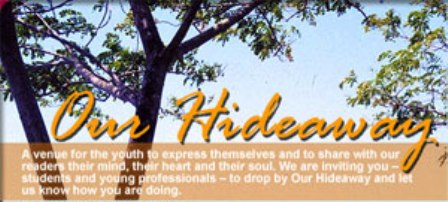
In high school, I heard many stories from my teacher about ordinary people making a big difference in the lives of others. These stories so inspired me that I wished that someday I, too, would make a difference in the lives of other people.
During my third year, our school chaplain asked my classmates and me if we would like to go with him to a far-flung municipality in our province where he would celebrate Mass, because the priest there was sick. Seeing his sense of duty and dedication as a servant of God brought me to the point that I wanted to be a priest too.
A year later, I attended search-ins of all congregations that visited our school. Unlike my classmates who joined the search-ins for the free snacks and to avoid lectures from our teachers -- that's what they said to me -- I attended because I wanted to be sure whether the priesthood was my vocation. My parents at the time strongly disagreed with my desire to enter the seminary. If I was sure, at least there would be no regrets on my part if I went against their will.
I finally decided to enter the seminary and joined the Society of St Columban. I had my formation inCebu/st. For nearly three years I enjoyed my stay there because I lived with students from different parts of the country, was directed by exceptional formators, and inspired by many other priests and lay missionaries. But in my third year, it seemed that I lost focus about my calling. The formators saw this and decided to let me go. I was hurt and it took me a while to accept their decision because I thought it was unfair. I had done nothing wrong to deserve it. My whole world collapsed, like it was hit by a great tsunami. I even condemned God because I thought that that was what He wanted for me. However, I continued by studies in Cebu but after graduation decided to go home to Legazpi.
For a year, I didn't attend Mass because I still questioned God's plan for me. However one day, two friends from high school, whom I met in a mall, invited me to attend a Christian Life Program (CLP) of Couples for Christ - Singles for Christ (CFC-SFC). At the time, I was already teaching, because that was the only job available with my degree. After a year in SFC, my friends gave me duties such as giving talks to other young professionals, and later leading a CLP for the group.
After four years of active service in SFC, I’ve realized that I have actually been serving God through the movement and many have said ‘thank you’ for being an inspiration to them as a leader/speaker. I’ve even learned to love teaching now since it has given me an opportunity to make a difference in the lives of my students. I once received a comment in an evaluation from a student, that he perceived me as a priest giving a sermon. That gave me a pleasant feeling because I knew that my students learned much from me, especially about life.
Looking back, I have no regrets. I don’t resent the fact that my formators asked me to leave the seminary. It was a blessing, actually. If not for that decision, I might not have seen that I can serve God in other ways. I'm beginning to understand God's plan for me. He allowed me to experience these things in life because He is preparing me for a big challenge, I'm not sure what it is, but I know it will be BIG.
‘For I know what my plans for you are, plans to save you and not to harm you, plans to give you a future and to give you hope. For when you call on me, I will listen; you will seek me and find me when you search for me with all your heart.’ (Jeremiah 29:11-13).
At present, I serve in Gawad Kalinga, a housing project of CFC-SFC in our area. Aside from teaching, I coordinate the National Service Training Program - Civic Welfare Training Service of our school. I'm even considering working full time or serving as a missionary for my community in the future. I'm also open to the possibility of fulfilling my first love, to be a missionary priest someday. Who knows what the future holds, but at this point of my life, I'm pretty sure that I'M HAPPY SERVING GOD!
Partners In Mission
By Rheena Babanto
Former Columban lay missionary Rheena Babanto now works as a college counselor at St Scholastica’s College, Manila.
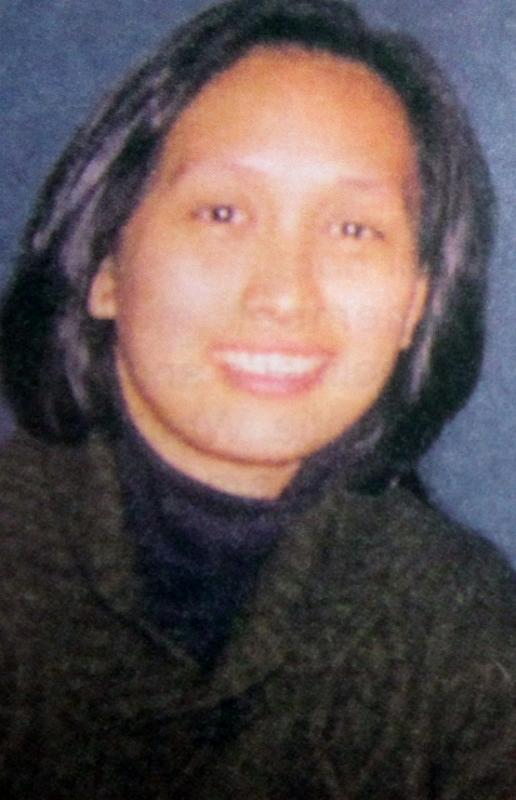 We arrived in Korea in April 1997, springtime. I can still remember how bulky we looked because of our three or four layers of clothing to battle the cold Siberian wind. We spent nine months learning the language. During that period I went once a week after class to a kind of day care center in a poor area in Seoul. Children with both parents working are sent there for the day. I taught them English nursery songs. I remember the first time we met, they stared at me with amazement, telling me how big my eyes were. They often looked confused when I struggled to speak Korean. The fun the children shared with me made the stress of learning the language more bearable.
We arrived in Korea in April 1997, springtime. I can still remember how bulky we looked because of our three or four layers of clothing to battle the cold Siberian wind. We spent nine months learning the language. During that period I went once a week after class to a kind of day care center in a poor area in Seoul. Children with both parents working are sent there for the day. I taught them English nursery songs. I remember the first time we met, they stared at me with amazement, telling me how big my eyes were. They often looked confused when I struggled to speak Korean. The fun the children shared with me made the stress of learning the language more bearable.
After language school I lived and worked in Shillim 10-dong, a poor urban community in Seoul. It had been a mountain village of small houses close to one another. By this time many apartments had been built and more were going up in most of the area. But there’s still a small remnant of the original village, a neighborhood called San-Tongne. To live out the Columban charism of going out and sharing the Good News with the poor and marginalized … that’s the call I’m convinced I had responded to and had gone there for. But seeing a different kind of poverty than I had experienced and saw back home raised questions for me as to who the poor and the marginalized were from my standpoint. In an industrialized country like Korea, I knew I had to adjust the way I understood and saw poverty.
In connecting with a group of young adults who visit the sick elderly living alone at home, I saw that old people are marginalized. The fast-paced, individualistic lifestyle developing with the growth of the country’s economy and technology, leaves way behind old people and others who cannot catch up. With their lower energy-level and productivity, it’s not easy to flow with the rat race, something clearly reflected in their use of everyday words such as ‘pali-pali’ (to hurry), ‘papa-yo’ (to be busy) and ‘es-tres’ (stress).
During my second month in the area, I attended a kind of graduation party for old people who had been attending a weekly gathering for a semester, sponsored by the parish. When it was finished and I was going home, I happened to see this old woman, with short white hair and severe-looking features, her back greatly stooped. She was waiting for the green light to cross the pedestrian lane. When the go signal flashed, I noticed that she didn’t move, while everyone else was crossing the street. I hurriedly came to her side and told her when it was time for us to cross. That was how I first met Anna Hal-mo-ni or Lola Anna.
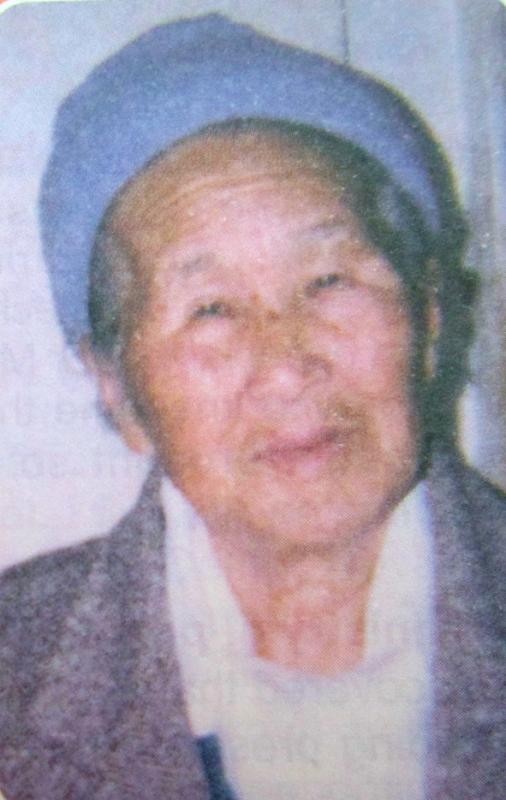 While walking with her to her house, I found out that she had poor eyesight and it was hard for her to see things clearly from afar. She’d been living in the area for many years since she’d moved from the province and so she knew the Columban missionary priests who had lived with them years back in San-Tongne. When she knew that I was a Columban missionary, she stopped walking, faced me and said, ‘Thank you for coming a long way.’
While walking with her to her house, I found out that she had poor eyesight and it was hard for her to see things clearly from afar. She’d been living in the area for many years since she’d moved from the province and so she knew the Columban missionary priests who had lived with them years back in San-Tongne. When she knew that I was a Columban missionary, she stopped walking, faced me and said, ‘Thank you for coming a long way.’
The second time we met was in the church and she wanted to see where I lived. So off we went. She was my first visitor and as soon as we entered, she prayed for peace and blessings for me as I lived within the community. My encounter with Anna Hal-mo-ni didn’t end there. One meeting followed another. I visited her house, ate meals, laughed, prayed and cried with her. She was living in a small room in the basement of a three-floor villa. Even at 84, with failing eyesight, and a bent back which made her use a cane at times, she managed to live on her own. She had three sons and two daughters, all married. In Korea, the first son is the one to take care of the parents, but Anna Hal-mo-ni chose to live by herself because of problems in relating with daughters-in-laws. Instead, her family regularly gave her enough money to live by.
There would be times she would cry upon seeing me, especially when we hadn’t met for quite some time. When she was sick, she cried out her loneliness. And when she was happy she’d clap her hands -- and feet! -- leaving me open-mouthed seeing how comfortable she was with me. I thought to myself, ‘I meet loneliness now and again in my journey through life, but this old lady knows loneliness only too well, as she had been with her spouse and children for most of her life and is now living alone.
She married at 18 and became a Christian at 21. Her husband died ten years before I met her. Aside from some minor accidents like missing her step in the street or on the stairs, causing her to have bruises, Anna Hal-mo-ni’s health was remarkably good. She managed to get around her room and prepare her meals. Most Korean houses have their heating system, which they call On-dol, under the floor, that’s why they eat, sit and sleep on the floor, to keep themselves warm especially during the cold seasons.
Almost everyday Anna Hal-mo-ni was out visiting old, sick people living alone like herself. It was she who introduced me to another old lady who had grandchildren whose parents had walked away and left the children orphans. Most children of their age go to tutorial centers after school, but they couldn’t afford to do so. I was asked to help by tutoring them in English.
Several times I asked Anna Hal-mo-ni to let me join her in visiting, as I wanted to get to know people in the community. She willingly accommodated me and we’d visit homes together on certain days. Some homes welcomed us warmly while others refused to receive us. Whenever we saw old people sitting on the side of the street, Anna Hal-mo-ni would approach them even though she didn’t know them personally, and with an easy manner introduce the two of us. When we were walking together out the street, I marveled at the sight we cut. Neither generation, race, language nor energy-level blocked us as companions in mission. However, we knew one common language which brought us together and towards others: the language of love in which Jesus was our model.
Remembering Him
By Claire Dulac
Claire Dulac, whose letter on WYD 2000 appears in this issue, gave this talk at a memorial Mass for Pope John Paul in her parish church, St Joseph’s, Grand Prairie, Alberta, Canada, on 4 April, two days after the death of Pope John Paul II.
I find it fitting that the youth of this diocese have been asked to speak about their experiences with the Holy Father when we could hear tens of thousands of young people singing in St Peter's Square as he lay on his deathbed. The Holy Father said then, ‘I sought you out and now you come to me. Thank you.’
This, to me sums up His Holiness. Beginning in 1985, the Holy Father called the youth of the world to come and join in a journey of faith as one community. I have been blessed to have had the opportunity to attend four WYDs beginning with Denver, USA in 1993, Manila,Philippines in 1995, Paris, France, in 1997, and Rome, Italy 2000. Sadly, I was away for the WYD in Toronto, 2002, working on a special assignment in Thailand.
In each experience the humanness of the Holy Father never ceased to amaze me. He would laugh and sing with us but he would also cry with us. In Denver, 300,000 pilgrims were chanting ‘John Paul Two, we love you!’ and after a few moments of this he raised his hand and with tears in his eyes said, ‘and to my children, John Paul Two, He loves you!’ And at every following WYD he would reply to us in this fashion.
The highlight for me has always been my first glimpse of the Holy Father at each WYD which, no matter how far away from him you were, you would receive an overwhelming feeling of Love and Peace. The second highlight was always the overnight vigil with the Holy Father. They were truly awesome, with anywhere from 300,000 people to a record of five million in Manila all singing and praying together and sharing in the Mass.
The Holy Father’s messages were always powerful and fulfilling - he was always gentle and kind in his messages - but firm as well. He told us that ‘we, as the leaders of tomorrow, the saints of today, need to make this a better place for ALL in the twenty-first century. By saying “yes” to Christ, we are saying “yes” to the noblest thing that we will ever do. In return God will give us the strength that is necessary.’
In Paris, where my brother Marcel and I lead a group from our diocese, the Holy Father challenged us to recognize and serve Jesus in the poor and the marginalized. As youth, we are not immune to suffering and we needed to reach out and touch others, touch Jesus. His Holiness challenged us on the verses found in Matthew 25:42-43. He said that someday we will all meet Jesus face to face and at this meeting he will ask us: ‘I was hungry, I was thirsty, I was naked, I was a stranger and I was sick; what did you do? How will you answer him?’
In Denver the theme was: We are One Body, One Body in Christ, and at every WYD we would sing that song and, until Rome, when the Holy Father’s health was not as good, he would join in the actions with us. He taught us that we need to unite and be strong as One Body in Christ. I pray that the legacy that his Holiness left behind to the Youth of the world will continue and that we will recognize the urgency in His calling.
Viva il Papa! Viva!
John Paul II, we love you!
Remembering The Columban Fathers
By Ma. Nimfa Penaco-Sitaca
Judge Ma. Nimfa Penaco-Sitaca of the Regional Trial Court of Misamis Occidental was last year named Most Outstanding Judge in the Gender Justice Awards project launched in December 2003 by the Philippines Center for Women’s Studies (UP-CWS), the UP Center for Women’s Studies Foundation, Inc, and the National Commission on the role of Filipino Women (NCRFW). She lives in Ozamiz City.
The light on the lampstand – today, that is how I think of the Columban Fathers who crossed oceans and seas from Australia, Britain, Ireland, New Zealand and the USA to labor in distant mission fields - the vineyards of the Lord, in undeveloped Mindanao.
As a child growing up in Ozamiz City, I didn’t think of the difficulties the Columbans had to cope with – the culture, the climate, the noise around them, and a hundred and one other things that only they knew. They were very much part of the landscape of my childhood – they were in school, in church, out in the streets, in our homes, and even in the bug-infested movie-houses that my family and I frequented.
They were so much fun – they entered the classroom and brought the sun with them. The priests didn’t teach but their visits provided the highlight of the school week. Quizzing us or just spending time and ‘monkeying around’ with us, they revealed through the twinkle in their eyes (green, blue or grey - and brown!) their genuine love of children. And how did they speak such good Visayan? Today, my memory of their flawless Visayan and their knack for finding the perfect Visayan word is the bar to which I try to measure up when I prepare a talk in the vernacular.
Pacing the empty church with breviary or rosary in hand, sitting still before the Blessed Sacrament or waiting and sweating long hours in confession boxes, they showed me and my generation how it was to love the Master and the work He had given them to do.
Bishop Patrick Cronin, first Bishop of Ozamiz and later Archbishop of Cagayan de Oro, Father Cornelius Campion, Fr Michael Breen, Fr Seán McGrath, Fr Seán Lavary, Fr Aodh O’Halpin – they were the priests of my childhood and teens on whose sermons and homilies my generation grew. They were all Irish but Father Joseph Shih, a diocesan priest from China, also worked with them
Then as I was finishing college, along came Fr Kevin McHugh. He was tall and lean and 27, and so unlike all the Columbans I had known. He wasn’t the kind who would pat our heads or humor us. In fact, he hardly smiled and when he opened his mouth, it was to ask why things were done one way when they could be done another way - his way. Subtlety was not a virtue with him - he was very pointed and direct. As spiritual director of the Legion of Mary praesidium I was in, he was forever telling us that we, as Legionaries, could and should change the hearts and minds of our relatives and they way they did things. As in-charge of catechism, he took his duties very seriously, following us catechists around, and we worked in constant fear that our efforts were never good enough for him, which was, of course, not true. It was, therefore, an unforgettable moment when, after quizzing my class which I was getting ready for First Communion, he strode out to tell our catechism supervisor that he had finally found a good catechist, and that was, ahem, me!
Not long after, I left Ozamiz to study and work in Cebu. Sad to say, there were no Columbans there. I learned from friends back home that Fr McHugh was still breathing down their necks, setting standards that were too difficult to reach. Much later, I learned that he had been assigned to the heart of a predominantly Muslim area in Mindanao where he stayed for many years. Sometimes, I would read in the papers that a white priest had been killed in Cotabato and my heart would freeze, afraid that I would read his name. Coming back to Ozamiz, I never met him again in more than 30 years, but inquiries about him revealed that he was doing very well in Lanao del Sur and that he was – surprise - very much loved! So much loved that when he got sick and had to be transferred to be nearer his doctors, people in his parish went around with long faces for years, pining for him and mourning his absence.
One summer, not long ago, I found myself with my family staying just a stone’s throw from Malate Catholic Church, Manila. Going in, we found a white priest celebrating Mass. After he had read the gospel and the people settled down to listen to his homily, he moved a white-board up front and with a pointer in hand, started to teach and preach. As everyone listened fascinated, I was remembering Fr McHugh who taught and preached with so much élan, and realized it was Fr McHugh, alive and in person! Mass over, children swarmed around him to kiss his hand as he walked down the church aisle, while parents stood by, smiling at him. I thought, wow, this priest is as loved as he deserves! I waited till everyone had removed themselves from the aisle before tentatively calling his name. It took him only a few seconds to recall my name, despite the years and the pounds.
Since then, I have kept in touch with Fr McHugh, whom I now call ‘Father Kevin,’ and have got to know and understand him better. I saw the back-breaking work he does in Manila despite a pacemaker. Listening to him deliver a homily at the nuptial Mass he celebrated at my daughter’s wedding recently, forty years after I had first seen him, I saw he was still as fiery as ever - afire for his Master and the work he was doing. I think people today are more discerning than we were in my time – they instantly take Fr Kevin to their hearts.
Truly, our lives in Ozamiz were richer because of the Columbans who came our way. Grown-up, we came across more Columbans – Fr Gerard Markey, Fr Joseph Murtagh, Fr Seán Coyle, Fr William Carrigan, Fr Francis Baragry and Fr Aedan McGrath - whose lives of service illumined, marked and spoiled us. It was tough going for our poor diocesan priests – they had to make an arduous climb to the top floor of the building of our hearts which we had reserved for the Columbans. Reaching it, they waited a great while before we would open our hearts to them.
It has been years since the Columbans left us. My children hardly know any. I know, however, that the light of the Columbans continues to burn on a lampstand for all to see and that others will keep the lamp burning after them, because of them.
You may email the author at nimfasitaca@yahoo.com
The Challenge Of Making Decisions
By Sister Anne Carbon SSC
Columban Sister Anne Carbon of Cagayan de Oro took her final vows in 2003. She ministers to those suffering from the psychological effects of Peru’s years of political violence.
When I entered religious life in the mid-’90s, it was certainly different from the life the older Sisters had lived for years and years. Gone, in some congregations, were the days of superiors, the formality of wearing a religious habit and serving in institutions such as schools and hospitals.
It was at this time that the Columban Sisters were exploring the idea of ‘participative leadership,’ which is based on the understanding that all in a group can contribute to and share in decision-making.
During those early days, I can vividly remember the two points of view on this model of group participation.
Some wanted to explore this new leadership idea, while others sought to hold on to the tried-and-true methods they had known all their lives. Looking back, I can see the wisdom of the participative model and how it helps us younger Sisters prepare for our missionary challenges. Our formation as Sisters must be a formation for life.
The Sister responsible for my religious formation used to challenge me by saying, ‘You know your boundaries. You have to decide for yourself what is negotiable and what is not.’
I found her statement difficult and challenging. I longed for her to tell me what to do. But later I discovered her statement created a sense of freedom that allowed me to explore the wider aspects of decision-making. It gave me the capacity to reflect on my decisions and ask questions when things were not clear. Needless to say, I made mistakes along the way, and I learned how much harder it is to decide for yourself than be told what to do or to follow instructions without question.
Service In Ordinary Times
During this time we were also phasing out our service in schools and hospitals. We were challenged to look at our realities and see where we could best offer our lives for the service of humanity and the proclamation of God’s reign in our world.
During those years, my mission work here in Peru was mostly with lay people. From that, I was led to reflect upon and appreciate the essence of being a Religious — the total, life-long gift of oneself to God for the service of people lived out in the ordinariness of daily life.
I remember how some people would say to me, ‘You are different from other nuns we know. You are part of human reality, and for that reason we have no reservations about sharing with you the struggles of our lives.’
Not having a habit and wearing regular clothes was a challenge at the beginning. But my experience shows that people value how I relate to them, not my physical appearance or what I wear. I do believe that people see in us a profound commitment and a selfless desire to give ourselves to the full.
When people ask me why I decided to become a Religious Sister, I usually reply, ‘It is because I have found the greatest treasure.’
It is this treasure I am willing to share and give back to my loving God by serving others.
World Youth Days
By Claire Dulac
Claire Dulac grew up in Haines Junction, a small town in the Yukon Territory in northwest Canada. She attended the World Youth Days in Denver, USA (1993), Manila (1995), Paris, France (1997) and Rome (2000). Here is an edited version of a letter she sent to friends after Rome.

My Dear Friends in Christ,
I have just physically returned from an amazing journey with God and with friends, though my spiritual journey continues. I was extremely privileged to be one of two million youth to attend the Jubilee World Youth Day (WYD) Pilgrimage in Rome, Italy, from 13 to 23 August 2000. What a truly encouraging, spiritual, wonderful, and enlightening experience this was for me.
Since coming home I’ve often been asked, ‘What did you think? Did you enjoy it? And how was it?’ My answers might range from, ‘It was way too hot, there were way too many people, I was exhausted, the walk was hard and long, etc.’ Instead, I think the questions should be, ‘How did you feel? What did you experience?’ My answer then would be ‘God.’
I had nine wonderful days in Rome, with the Diocese of Sault Ste Marie, Ontario, Canada, which had kindly adopted me. Our group of 45 included a seminarian, a deacon, three priests, an incredibly ambitious couple and 38 young adults ready to experience God. Our group was part French-speaking and part English-speaking from Ontario, and myself from the Yukon. We gelled together extremely well. Others were amazed at how strong our group was. We began each day with group prayer in both languages and closed each evening with group prayer and sharing time, not to forget all the praying that took place during the day. In any message received from Mary, the Immaculate Conception, she tells us to ‘pray, pray, pray’; and that we did.
The week was well planned, packed with activities and events. Our first day saw us in Assisi. On our second day WYD opened with the arrival of the Pope. The following three days were set aside for preparation for our pilgrimage walk and the vigil and Mass with the Holy Father. After WYD we had a two-day tour of Rome, one in the ancient city and one in the religious city.
The Pope’s arrival was amazing in one way, but extremely frustrating in other ways. I was too busy fighting with 700,000 other people for a spot in St Peter’s Square, which holds a mere 50,000, just to see and be near the Holy Father, instead of sitting and listening to his message. I felt the energy of the crowds, the excitement, knowing that the only thing between me and the Holy Father was a barrier and the stairs of St Peter’s Basilica, and being able to share the experience with friends. The Holy Spirit was so alive that evening in St Peter’s Square.
The following day we had our first catechesis session, with Cardinal Polycarp Pengo from Tanzania. He spoke to us on the words ‘Jesus of Nazareth is God with us.’ He spoke to us about Mary and her visit from the Archangel Gabriel, and how she and Joseph were both very young at the time. Therefore, we as youth should see these two saints as our role models, for at such a young age, they gave up their lives for God. Cardinal Pengo asked us, ‘How can you as youth, bring God’s presence to the world today?’ In summary, our answers were: to try and exemplify Christ using as few words as possible, through our daily actions, and to pray, pray, pray.
We then had the opportunity to ask His Eminence questions, which he answered with incredible grace and simplicity. When someone asked about the need to go to confession my heart felt heavy and my Spirit weak. I almost felt ill, and then it dawned on me that it was God talking to me. He was telling me that I had to go to confession. Cardinal Pengo told us that as Christians we all have faith; our faith is personal but also communitarian, meaning with God. As we all sin we cannot have full completion, full commitment, and full involvement with God; we therefore need to realize that we indeed sin, and that even the greatest of saints sinned. As a result, we need to go to personal confession before we go to total confession, otherwise known as redemption. Because of sin we are segregated from our fellow Christians and so should want to go to confession to rejoin our community of believers.
During the Mass with the Cardinal, I struggled inside; I felt empty. When I was going up to receive Holy Communion I had a continuous feeling that I should not take the Host but should go back and sit down. Of course, I did not listen, and the moment I took the Host, I was ill. I had instant tears and felt awful inside. It took me a few minutes to quit crying and summon up enough energy to receive a blessing from the Cardinal. However, when I was face to face with him I started to bawl. I felt like an absolute bumbling idiot but found that his blessing calmed me. That evening I went to confession and afterwards felt my spirit had been released of a great burden and it began to soar. I was then, in hindsight, ready to receive what God had in store for me.
Your Turn
A Young Reader In Ilocos Is Inspired By An Article From A Teacher In China To Be A Catechist To Small Children In Her Own Place.

Dear Mr Nicholas Murray,
Greetings of peace and joy!
I am Donnalyne Savellano, a fourth year high school student of St Paul College of Ilocos Sur, a Catholic school. As part of our training and formation as ‘Paulinians,’ we have Religion and Values Education as one of our major subjects. The school also supplements this with every issue of Misyon.
As I was reading the July-August 2004 issue, I was struck by your story entitled When you learn, teach; when you get give. Being a teacher and minister as well holds a great responsibility on your part but this does not hinder you from going from one place to another to proclaim His teachers and render service for others.
In my fifteen years of existence on earth I have witnessed the love and care of a happy family, a community and a people called together by God to serve others. I have interacted with my classmates during class, listened to my teacher in the discussions, committed myself to various programs in school and actively participated in church activities. These somehow contributed to my development as an individual and molded me to be a well-rounded Christian. But it feels like I am not mature enough to face all the challenges in life as you did in your journey. I can also say that I have touched lives of different people but not as much as you did.
I then would like to express my desire to be your missionary partner. As you teach students in China, I will be willing to teach little kids in our Community Extension Program in Baldi. As you inspire others through stories of your life, I would also inspire others, especially the less fortunate, through my own simple works and deeds. As you share your knowledge with others, I would also share with others my God-given talents, my time, treasure and all that I have. As you act as a model for younger generations, I would also do what I can to be an exemple of Christian values. As you sacrificed your family, I will be in solidarity with the poor. And as you render service and availability to God, I will serve others as Jesus did in his life. As we walk hand-in-hand towards God, may you continually help young people to be aware of today’s happenings in response to the availability for God and may you find your ministry in China more inspiring and worthwhile. With all these, I hope to receive a reply from you soon.
God bless and more power to you as you touch the lives of others!
Your missionary partner,
Donnalyne Savellano
‘Praying Together, That’s How We Start’
By Ma. Milagros T. Dumdum
Ma. Milagros Teleron Dumdum is a mother, poet, insurance underwriter, teacher, and wife of Cebu RTC Judge Simeon ‘Jun’ Dumdum. This is a slightly revised version of a talk given to students, teachers and families who gathered on 21 January 2003 at the University of Southern Philippines, Cebu, for a prayer vigil for the success of the Fourth World Meeting of Families in Manila.
Last Sunday, the day of the Sinulog, I was awakened by words quoted by a bishop in his homily at a Mass on television: ‘I assure you that unless you become like little children, you cannot enter the kingdom of heaven.’
Like any family, we pray together -- we say grace before and after meals, we pray the Rosary daily if possible, and occasionally Night Prayer (Compline) of the Liturgy of the Hours. We encourage praising and thanksgiving at every opportunity. We endorse spontaneous prayer, following our example. Usahay magkayagaw. The prayer becomes rambling, as any real conversation, even conversation with God, often does.
DOMESTIC CHURCH
We, of course, know that the family is a little church, a domestic church. As such, the family must be a community of prayer. Prayer requires the values of children, and it is here that the Gospel of last Sunday’s Mass has a bearing: ‘Unless you become like little children, you cannot enter the kingdom of heaven.’ (Matthew 18:1-5)
Prayer springs from a sense of littleness, of our being children. It is as children that we should pray, for did not the Lord teach us to address God as our Father?
This being children in a good sense -- of being gentle, kind and giving, of dependence on each other, of compassion -- is what constitutes the Christian family. Jesus Himself told us to be bold like children, by asking: ‘Ask and it will be given to you; seek, and you will find; know and it will be opened to you.’
What happens when we pray? And what happens when we pray as a family?
MAIN CONCERN
When I was in high school, I used to kneel down to pray at bedtime, to ask the Lord to protect me and my family, to help me get good grades, and to see me through in all my struggles. To excel was then my main concern, and in this I felt I needed God’s help. When I prayed everything felt light and easy, and it seemed that I was floating like a ball on a mountain stream. It is true that in prayer one gets to know the Author of all things, who assures us who are weighed down by daily living: ‘My yoke is sweet, and my burden light.’
Prayer has been essential to my life. I remember what a writer said: ‘The right relation between prayer and conduct is not that conduct is supremely important and prayer may help it; but that prayer is supremely important and conduct tests it.’
To live is Christ, St Paul said. This is the goal that we strive for in our family -- to live the life of Christ in its fullness in the home and the world outside. We hope to accomplish this by constant prayer, by reading the Bible, and of course by availing ourselves of the sacraments, especially the Holy Eucharist. Life’s voyage is a voyage of faith, a voyage in which we seek the help of the Blessed Virgin Mary, the model of all those who believe, a devotion to whom we strive to instill in our children.
Gingging Dumdum, her husband Jun and their daughter Yeni
BASIC CELL
In the address to the Third Plenary Assembly of the Pontifical Council for the Family on 13 December 1985 His Holiness John Paul II said that the family is one of the specific areas in which it is up to the laity to fill society with the Spirit of Christ.
Not only is the family the basic ‘cell’ of society, it has also its own ‘subjectivity,’ its interior life. Our family is unique, as every family is, and our subjectivity, our interior life, finds affirmation, and draws grace from the well of the Holy Spirit, in prayer.
I discovered from the writings of our daughter who died in 1997, a confirmation of the family’s influence on her, in a piece she wrote on the occasion of a school recollection, entitled, ‘Giving the Lord Space on a Busy Day’: ‘As I get older, I try to discern more or myself, and it is through other people, especially those who are my constant companions, that I am able to unravel who I am and who I am not. I realize that my family has been and will be the second most precious gift the Lord has given to me, next to my life. I have learned to value thanksgiving more especially as I am blessed with loved ones and with graces that will help me live a fuller life with God . . .’
(Simone was 18 when she died in a sea-accident together with six other relatives. A writer-priest likened her short and full life to a beautiful haiku poem. Always a dutiful daughter and an honor student excelling as well as in extracurricular activities of her school such as writing, debating, and theatre, she made prayer central in the details of her day-to-day life. Had she lived to this day, she would be 26 and an architect.)
MATURE CHRISTIANS
Indeed, it is in and with the family that children learn how to get strength from prayer and the guidance of the Holy Spirit as they turn into mature Christians, just as it is in and with the family that parents find their burdens lifted and their days lightened by prayer, as they grow in the joy and wisdom of faithfully living the life of Christ.
Thanks to my spouse and children, who have journeyed with me, my sense of gratitude for my life and everything that has happened has never been so marked as now.
One quiet windy Saturday at home, just seated at our terrace, I watched the leaves flutter. They brought me childhood memories of leaves moved by a gentle wind at the piano house years ago -- and I prayed, ‘Lord, how indeed you have taken care of me and my family. Sanctify every moment now, such that every decision I make comes from you and is blessed by you. Give me the strength to do your will. Perfect my work as wife, mother, daughter, worker, friend, guide, your servant in this wondrous gift of family and the bigger community of your Mystical Body. Amen.’
‘Tug-of-war’ – ‘a tug-of-reconciliation-and-peace’
By Sister Sonia Sangel FdCC
Sister Sonia wrote in our September-October 2003 issue about the Maestra di Campagna, or ‘Rural Teachers,’ whom she trains in East Timor. Here she tells us about an unusual way of working for reconciliation.
I never used to like playing ‘tug-of-war’ before, but I do now! I knew that the consequence of losing the game was to fall on top of the others causing bumps, bruises and scratches on everyone’s hands and legs. The losers cry and the winners laugh seeing the losers in pain. Terrible!
Recently, I used this game as an activity to conduct a session on reconciliation and peace. I also joined the game and to my surprise it was a ‘win-win’ situation for every one of us. The winners pulled the opponents into their territory and embraced them. No one felt defeated. It was rather as if they were coming home.
Through the process
East Timor, as the newest independent nation in the world, needs to begin the effort toward ‘Progress and Development with Reconciliation and Peace.’ With its 400 years as a Portuguese colony and 25 years under the Indonesians, passing from a painful history of stress and strain to freedom has left hurts engraved in many hearts, the bitter wounds of memories from the past. They need to admit past traumas, take them and believe that they’re gone, learn to confront the present and meet the future with much brighter hope. Liberty is not only freedom from those dominating us but also from our own grudges and hidden unforgivingness.
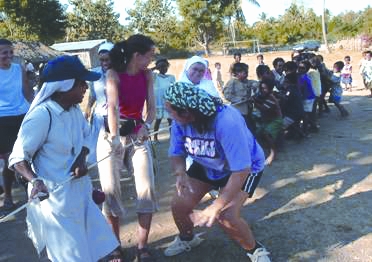
Game of Peace
As a missionary, I wish to share the great social concern of the Church in Asia, which is the building of peace. Asia is an arena of intermittent violent ethnic, religious and political conflict. We are called to be builders of peace in such a situation. As the Gospel says: ‘Blessed are the peacemakers; they shall be called God’s children’ (Mt. 5:9). Yet the road to peace is long and arduous. Somehow we can begin to play the game that brings us to reconciliation and peace.
While playing ‘tug of war,’ people’s assertiveness is shown in their effort to pull. But this time it was a different experience. I saw the winners helping the losers to stand up. I saw them embracing one another and soothing bruises, one saying, ‘I didn’t mean to hurt you,’ – an entry point, the beginning of deep sharing . . .
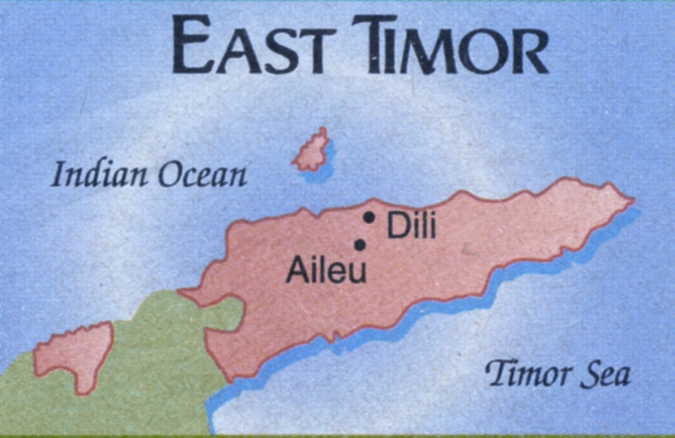
I hope and pray that this may the beginning of a culture East Timor needs right now, one of reconciliation and peace.
I believe that when reconciled to one another, the men and women of East Timor can begin to think globally. Looking at themselves as citizens not only of their own small half-island -- West Timor is part of Indonesia -- but as citizens of the whole world, they will learn to appreciate cultural diversity so as to work in partnership even with their neighboring Indonesian brothers and sisters.
And you, my co-Filipino missionaries: do you have time to play?
Take time off and play the game you never liked before. It might be a new and pleasant experience to play, not ‘tug-of-war,’ but ‘tug-of-reconciliation-and-peace.’ Try it!
‘We Wish to See Jesus!’
by Marjorie Militar
Marjorie is a third-level student at the University of St La Salle, Bacolod City.
Serving as a lector at St John the Baptist Parish, Bago City, it never crossed my mind that I’d be part of a great event that I’ll cherish for the rest of my life. In December 2003, our parochial vicar, Father Jonas Sumagaysay, told us about an event to be hosted by the Diocese of Bacolod the following November. Soon, we found ourselves busily preparing to welcome the Pilgrim Cross. It went from parish to parish, staying in each for two to three days, from Hinigaran in the south of the diocese, toSilay City in the north, visiting schools along the way, before returning to San Sebastian Cathedral for the start of …NATIONAL YOUTH DAY 2004.
Being the host diocese we had much preparation to do. The parish sent me and my co-lectors, along with members of the Legion of Mary and of the charismatic prayer group, to Sacred Heart Seminary for the diocesan facilitators’ training. Auditions and training for animators and those involved in cultural presentations followed.
On 24 November delegates arrived from all over the Philippines. Next day our anxiety and nervousness only grew stronger as we found ourselves gathering in front of the Cathedral for the start of the four-hour Pilgrim Walk to Panaad, the official NYD site.
We didn’t show our tiredness as we participated in the opening Mass with Bishop Vicente M. Navarra of Bacolod as main celebrant. After dinner, we watched the cultural presentation and even stayed longer, not because it rained but because we were having so much fun. Later we went home to our foster-families, our group staying with parishioners of Our Lady of Lourdes Parish, Bata.
Next day, we assembled again at Panaad and danced as the animators set the mood. We searched for our groups based on the color on the back of our NYD IDs. After fellowship, we eat lunch with our ‘Christian Faith Circle’ as we had catechesis on the themes, ‘Jesus is the Truth, Do You Believe?’ and ‘Jesus is Life, Will You Receive Him?’ In the evening there was an integrated penitential rite with the Way of the Cross and the Sacrament of Reconciliation. It was near midnight before we finally went back to our ‘homes.’
The third day was another exciting experience. We gathered at our assigned catechetical sites. My group was in Colegio de San Agustin (red), but I was also an animator at the University of St La Salle(green) and so had to venture back and forth. Fortunately, the schools are near each other. Later, all headed back to Panaad for the YOUTH JAM! Wow! I’ve never had such wonderful time in my life. It was raining but there was NO STOPPING us YOUTH as almost everybody went close to the stage and we danced and sang at the top of our lungs and shouted and clapped the NYD slogan, ‘N-Y-D, N-Y-D BACOLOD! N-Y-D, N-Y-D BACOLOD! N-Y-D SABAY SIGAW!’ The emcees had a hard time trying to end the JOYFUL commotion because every time they tried, we just replied ‘WE WANT MORE!’
We finally settled down for the cultural presentation, a showcase of talents from every region. It was fantastic! The priests danced and serenaded us with their matching music video! How cool! I witnessed nuns DANCING! Amazing! With heavy feet we finally went back very late to our foster homes and tried to sleep, with the idea bugging us that the next day would be the last.
With sad, yet not so sad faces, we faced the fourth day, 28 November, as we gathered once more. Now with our original group again we bade farewell to our foster-parents and family, in our fellowship party. I was very happy to have met Let-let, my NYD sister from Dumaguete, when we both stayed with the Ausan family.
After the final Mass at Panaad, Congressman Monico Pontebella encouraged us to sing ‘If We Hold On Together,’ which led to many tears. I didn’t cry, maybe because I was so overwhelmed and felt very fulfilled. But now I could say with my exhausted companions, in whose eyes I could see a glow, for now each of us could say, ‘Yes, I’ve seen Jesus!’
